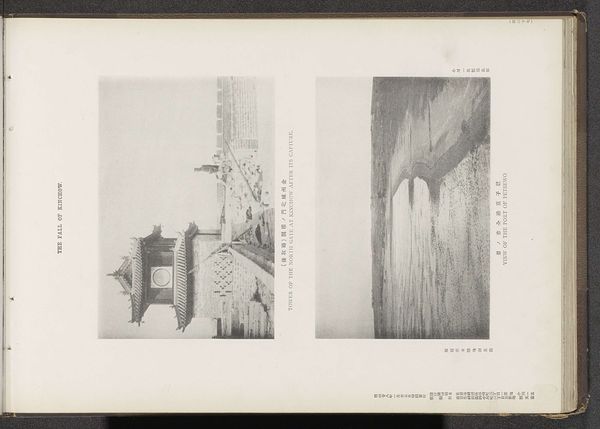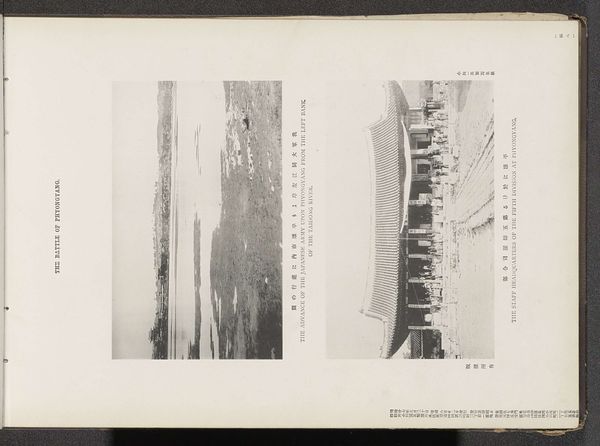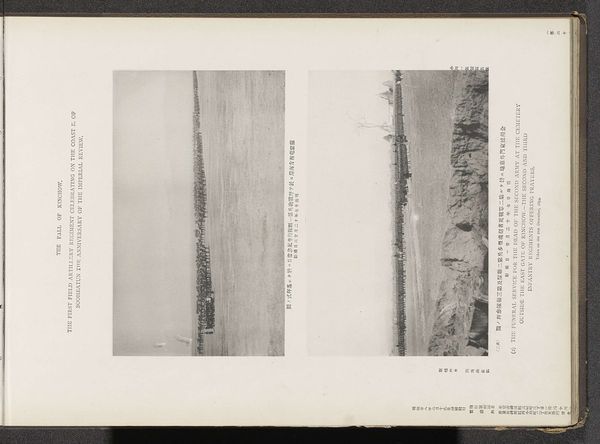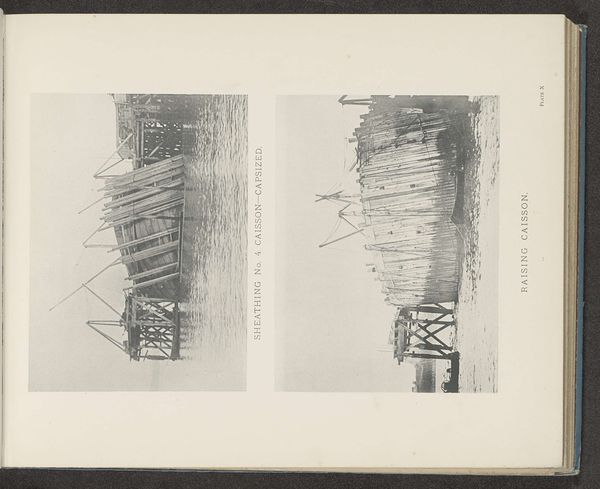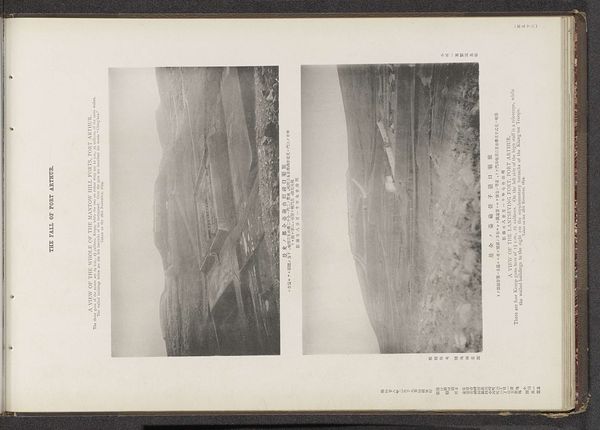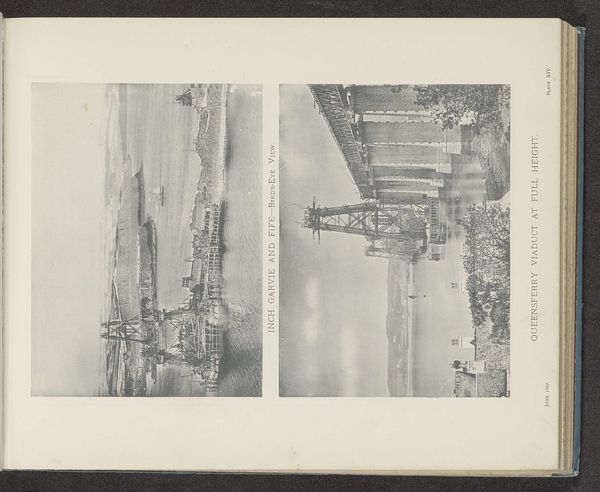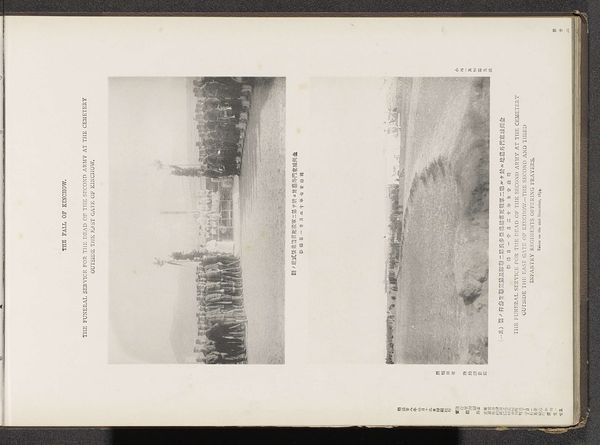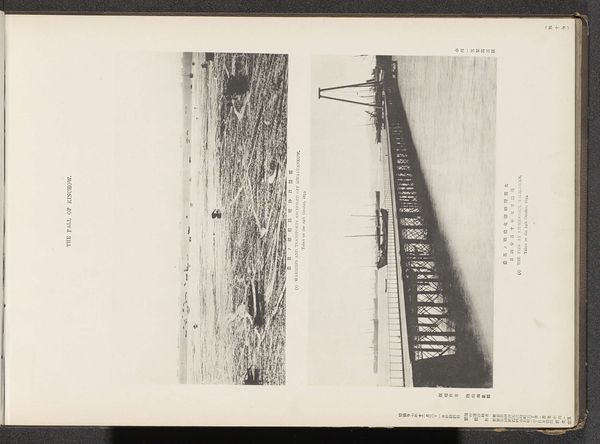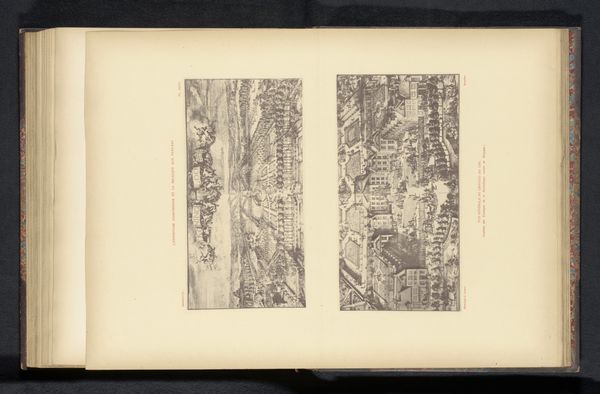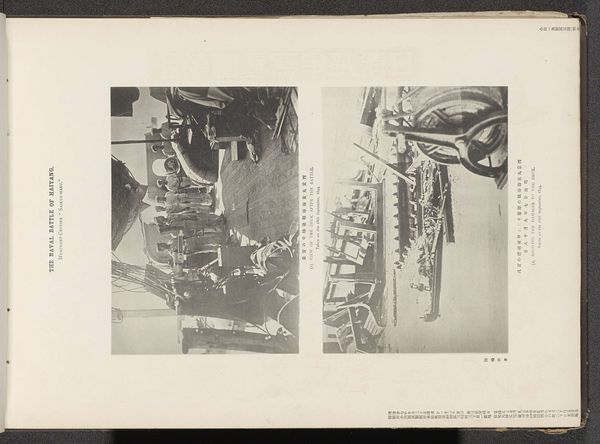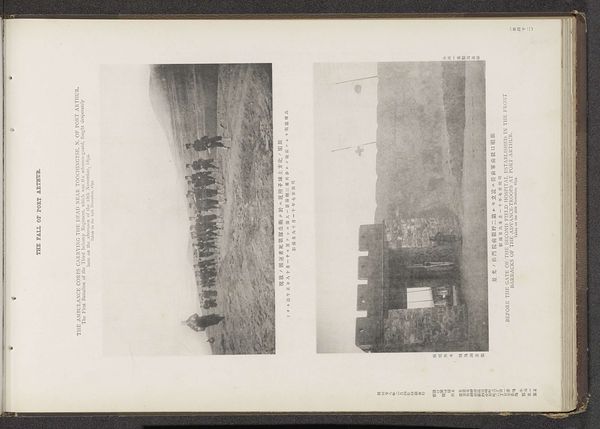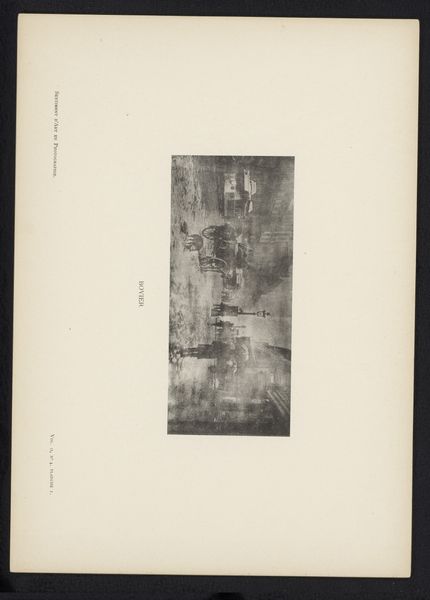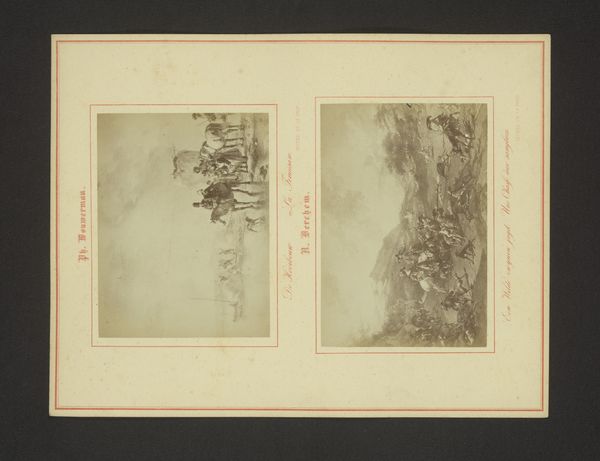
print, photography
# print
#
asian-art
#
photography
#
street
#
realism
Dimensions: height 426 mm, width 195 mm
Copyright: Rijks Museum: Open Domain
Curator: This piece presents us with "Twee afbeeldingen van Chinchow," dating to before 1895, captured through photography and presented as a print. The imagery, stark and sobering, hints at societal upheaval. What strikes you first about this work? Editor: The grittiness of the photograph, and the sense of devastation is really powerful. The contrast between the ruined urban landscape and the soldiers standing along a wall evokes a sense of imposed order upon chaos. Curator: Indeed. The two images are visually quite distinct, aren’t they? One depicts what appears to be the aftermath of conflict, showcasing the ruined structures. The other reveals prisoners overlooked by soldiers of the First Division of Kinchou, inviting us to explore themes of power and control. This photograph allows one to analyze themes of loss, power structures, and perhaps even the social stratification inherent within conflict and military occupation. Editor: From a materialist perspective, it’s important to consider the production of these images, I see how photography documented historical events. I would be curious to know more about who these prisoners were and where they worked or the trades they engaged in before they became the defeated. This print as a product and also object can offer insights into imperial dynamics, distribution of information, and even the labor of crafting these photographs into documents that were presented to western society. Curator: Absolutely. And thinking about how those materials are then interpreted and understood... This isn't just a picture of war; it’s an indictment of a societal collapse seen through the lens of asymmetrical power dynamics and societal shifts caused by these historical realities. The figures feel almost spectral within the composition, really creating emotional tension for me. Editor: Agreed, and by looking closer we find layers of meaning that force one to look at social conditions that create these images of devastation and military authority. Curator: Looking at these images as printed record helps one look closely at labor, historical context, and material impact. I find myself pondering not just who is in the photograph, but also what isn’t shown... the full breadth of civilian life violently upturned. Editor: Understanding its layers requires not just studying art and design. Thinking critically helps understand historical implications about people and land—reminding me how it acts as more than just an artifact; this represents the power dynamics embedded in historical narrative, where lives become material for the telling.
Comments
No comments
Be the first to comment and join the conversation on the ultimate creative platform.
